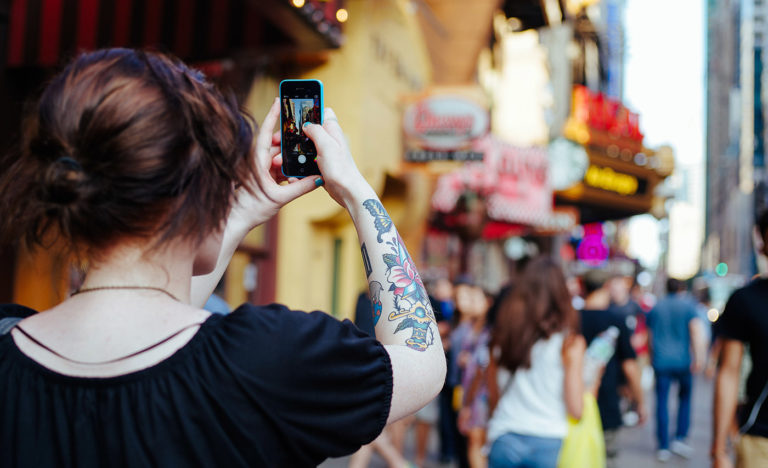Brand Humanization in a Digital World

Adapting to the digital world
This has been well known ever since brands started developing their digital presence; creating a website for your brand was never enough. Ever since brands entered the digital world, there have been several instances when advertisers were confronted with the fact that the old strategies would not work in this new environment.
So, brand humanization was born as a collateral effect of this evolution. Advisors, scholars and advertisers warned their peers about the risks of going online expecting things to be the same as they were when advertising was a one-way street. There was a need for change: brands had to get out of their high horse and talk to their customers, and, most of all, listen to what they had to say. To make this happen, brands had to know what they were and what they were not; they had to design a personality of their own that would guide their interactions with customers and “fans”.
So, what does all this mean to you?
In this article, we’ll describe a few things that can help you “humanize” your brand.
First of all, you need to work on your brand and build its profile. As if it were an actual person. What are its likes and dislikes? Is it a man or a woman? Is it young? How does it speak? Does it have a humorous tone? Does it use sarcasm or irony? These questions must lead you to your own branding and the way you communicate. There must be a continuity of sorts between your branding and this persona you have created.
Content is King
When using Social Media, it is important to pay attention to the news. There are weird things going on every day, that are politically neutral and can be used to create branded content. Politics are risky, even though many brands take a stance in some political matters. That kind of approach should only be used if you really know your customers and their opinions, which might be difficult – depending on the brand, its fan base might be quite heterogeneous.
Another thing to be considered is that most fans are not interested in commercial content. Don’t use your Social channels just to push posts about your brand that are useless to the customers. If your brand makes a difference in the customer’s life, that’s what your customers want to know about. What makes you better than the competition? How can you help your customers with your product? Try to offer real value in each interaction.
Did you know customers are people too??
There’s this rule that each customer needs to make contact with the brand an average of 6 to 7 times until they can effectively recognise the brand. Social Networks and Social Ads can help you make those interactions count and give them meaning. For this to work, you need to know your audience. What inspires them? How do you connect with them?
Learn from what your customers are doing online and what they say about your brand. If you are representing your brand online, listening is the most important part of your job.
Use Analytics to evaluate the success of your strategy and be prepared to change it if necessary. Be available when your customers are online. Quick answers are important.
Your employees make (or break) your brand
It’s also important to understand that we relate to people, not products. Your employees are way more relatable than a fancy logo. Value your team; invest in training, do anything it takes to make the people you work with happy about their job. If your employees feel undervalued by your company, it’s quite obvious they won’t be interested in defending your brand. Happy, fulfilled employees should be part of your strategy from day one: not only because you need them, but also because a toxic environment benefits no one. Every communication needs to be authentic; happiness can’t be faked.
If you do it right, your employees will have no issues providing their personal account about your brand. There are always people behind a brand; give them an opportunity and they’ll be your best ambassadors. And don’t forget: your brand image should be truthful. Don’t try to be something you’re not or you’ll be easily caught.
You get a gift, you get a gift, everyone gets a gift!
Your fans are the other important part of the equation. Share customer created content on your Facebook page; send “Welcome Aboard” gifts for new customers, and so on. You’ll be going above and beyond their expectations even if all you did was share a picture or a video. Your attention shows your customers you care about them; this is the way to create meaningful, authentic relationships.
Above all, value people. In the long run, people are way more valuable to your business than just some random sale.
What if something really bad happens?
Brands make mistakes too – and that’s okay. Part of the solution for most of these mistakes lies in being the first to recognise them. Own up to your screw ups. That’s what being authentic is about. Don’t let yourself get caught in a wave of bad publicity; prepare yourself beforehand, because these issues can happen anytime. There should always be a crisis management plan ready, just in case.
First of all, a quick answer is crucial. Don’t let a huge complaint unanswered in your page for long, or it will get worse. Recognise the issue; don’t try to downplay what made your customer upset and find a way to make up for it.
If there’s a full blown crisis with lots of complaints all over your page and bad reviews, then it might be a good idea to have somewhere else your customers can talk to you directly. You can have a fixed post on your Facebook page with a link for a direct chat service, an email or even a toll-free number people can call. This way, you’ll be able to redirect complaints to some other place, freeing your page of all those irate posts and reviews.
On your page, never forget the three answer rule: don’t answer a customer more than two times. Avoid conflicts whenever possible. Sometimes, you just can’t make everyone happy: and that’s part of being human.
Credits
- Main photo by Siyan Ren
- Bottom photo by Toa Heftiba
How do you feel about this article?







